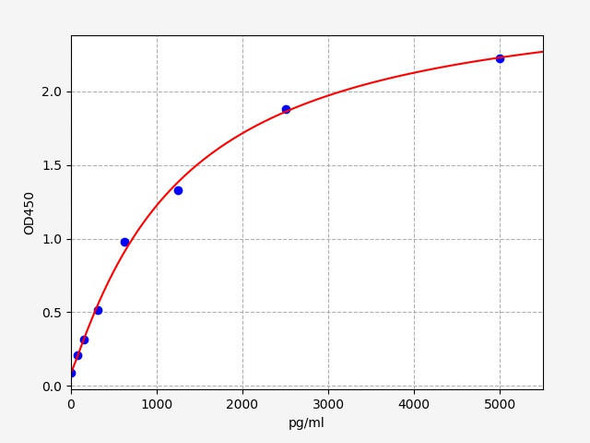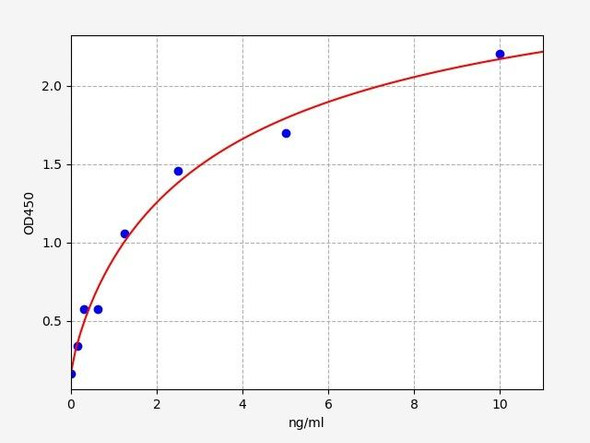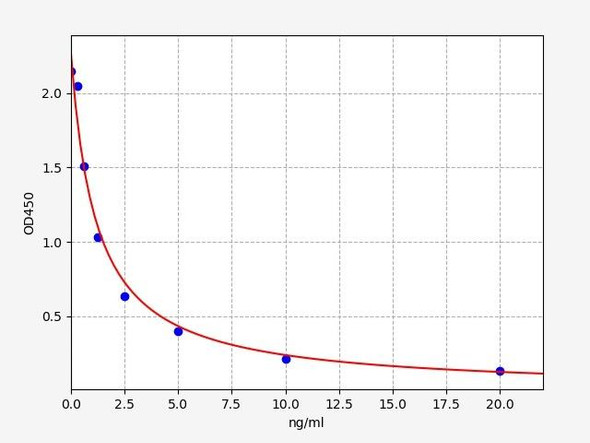Description
Human Wilms tumor protein (WT1) ELISA Kit
The Human Wilms Tumor Protein (WT1) ELISA Kit is specifically designed for the precise measurement of WT1 levels in human serum, plasma, and cell culture supernatants. This kit is known for its exceptional sensitivity and specificity, ensuring consistent and accurate results for various research purposes.WT1 is a critical protein associated with Wilms tumor, a type of kidney cancer that primarily affects children. Elevated levels of WT1 have also been linked to other cancers, including leukemia and mesothelioma, making it a valuable biomarker for studying these diseases and exploring potential treatment options.
This WT1 ELISA Kit provides researchers with a reliable tool for analyzing WT1 levels in biological samples, offering a deeper understanding of the role this protein plays in cancer development and progression. With its advanced technology and proven performance, this kit is an essential addition to any research laboratory focused on cancer biology and therapeutic development.
| Product Name: | Human Wilms tumor protein (WT1) ELISA Kit |
| SKU: | HUEB1188 |
| Size: | 96T |
| Target: | Human Wilms tumor protein (WT1) |
| Synonyms: | WT33 |
| Assay Type: | Sandwich |
| Detection Method: | ELISA |
| Reactivity: | Human |
| Detection Range: | 15.6-1000pg/mL |
| Sensitivity: | 10pg/ml |
| Intra CV: | 4.6% | ||||||||||||||||||||
| Inter CV: | 8.3% | ||||||||||||||||||||
| Linearity: |
| ||||||||||||||||||||
| Recovery: |
| ||||||||||||||||||||
| Function: | Transcription factor that plays an important role in cellular development and cell survival (PubMed:7862533). Recognizes and binds to the DNA sequence 5'-GCG(T/G)GGGCG-3' (PubMed:7862533, PubMed:17716689, PubMed:25258363). Regulates the expression of numerous target genes, including EPO. Plays an essential role for development of the urogenital system. It has a tumor suppressor as well as an oncogenic role in tumor formation. Function may be isoform-specific: isoforms lacking the KTS motif may act as transcription factors (PubMed:15520190). Isoforms containing the KTS motif may bind mRNA and play a role in mRNA metabolism or splicing (PubMed:16934801). Isoform 1 has lower affinity for DNA, and can bind RNA (PubMed:19123921). |
| Uniprot: | P19544 |
| Sample Type: | Serum, plasma, tissue homogenates, cell culture supernates and other biological fluids |
| Specificity: | Natural and recombinant human Wilms tumor protein |
| Sub Unit: | Homodimer. Interacts with WTIP. Interacts with actively translating polysomes. Detected in nuclear ribonucleoprotein (mRNP) particles. Interacts with HNRNPU via the zinc-finger region. Interacts with U2AF2. Interacts with CITED2 (By similarity). Interacts with ZNF224 via the zinc-finger region. Interacts with WTAP and SRY. Interacts with AMER1. Interacts with RBM4. |
| Research Area: | Cancer |
| Subcellular Location: | Isoform 4 Nucleus Nucleoplasm |
| Storage: | Please see kit components below for exact storage details |
| Note: | For research use only |
| UniProt Protein Function: | WT1: a DNA binding protein and apparent transcriptional regulator. Recognizes and binds to the DNA sequence 5'-CGCCCCCGC-3'. Expressed in the kidney and a subset of hematopoietic cells. Defects in WT1 are the cause of Wilms tumor 1 (WT1), an embryonal malignancy of the kidney that affects approximately 1 in 10'000 infants and young children. It occurs both in sporadic and hereditary forms. Four alternatively spliced isoforms have been described. |
| UniProt Protein Details: | Protein type:DNA-binding; C2H2-type zinc finger protein; Tumor suppressor; Transcription factor; Nucleolus Chromosomal Location of Human Ortholog: 11p13 Cellular Component: nucleoplasm; cytoplasm; nucleolus; nuclear speck; nucleus Molecular Function:protein binding; zinc ion binding; RNA binding; sequence-specific DNA binding; transcription factor activity Biological Process: tissue development; gonad development; positive regulation of apoptosis; positive regulation of transcription, DNA-dependent; heart development; thorax and anterior abdomen determination; negative regulation of transcription from RNA polymerase II promoter; glomerulus development; germ cell development; negative regulation of cell proliferation; regulation of transcription, DNA-dependent; epithelial cell differentiation; ureteric bud development; male genitalia development; vasculogenesis; kidney development; camera-type eye development; transcription, DNA-dependent; adrenal gland development; RNA splicing; glomerular basement membrane development; male gonad development; sex determination; regulation of transcription from RNA polymerase II promoter; ureteric bud branching; negative regulation of translation; positive regulation of transcription from RNA polymerase II promoter; negative regulation of cell growth; negative regulation of transcription, DNA-dependent; negative regulation of apoptosis Disease: Wilms Tumor, Aniridia, Genitourinary Anomalies, And Mental Retardation Syndrome; Denys-drash Syndrome; Mesothelioma, Malignant; Nephrotic Syndrome, Type 4; Frasier Syndrome; Aniridia; Wilms Tumor 1; Meacham Syndrome |
| NCBI Summary: | This gene encodes a transcription factor that contains four zinc-finger motifs at the C-terminus and a proline/glutamine-rich DNA-binding domain at the N-terminus. It has an essential role in the normal development of the urogenital system, and it is mutated in a small subset of patients with Wilm's tumors. This gene exhibits complex tissue-specific and polymorphic imprinting pattern, with biallelic, and monoallelic expression from the maternal and paternal alleles in different tissues. Multiple transcript variants have been described. In several variants, there is evidence for the use of a non-AUG (CUG) translation initiation site upstream of and in-frame with the first AUG. Authors of PMID:7926762 also provide evidence that WT1 mRNA undergoes RNA editing in human and rat, and that this process is tissue-restricted and developmentally regulated. [provided by RefSeq, Oct 2010] |
| UniProt Code: | P19544 |
| NCBI GenInfo Identifier: | 139778 |
| NCBI Gene ID: | 7490 |
| NCBI Accession: | P19544.2 |
| UniProt Secondary Accession: | P19544,Q15881, Q16256, Q16575, Q4VXV4, Q4VXV5, Q4VXV6 Q8IYZ5, A8K6S1, B3KSA5, |
| UniProt Related Accession: | P19544 |
| Molecular Weight: | 449 |
| NCBI Full Name: | Wilms tumor protein |
| NCBI Synonym Full Names: | Wilms tumor 1 |
| NCBI Official Symbol: | WT1 |
| NCBI Official Synonym Symbols: | GUD; AWT1; WAGR; WT33; NPHS4; WIT-2; EWS-WT1 |
| NCBI Protein Information: | Wilms tumor protein; amino-terminal domain of EWS|last three zinc fingers of the DNA-binding domain of WT1 |
| UniProt Protein Name: | Wilms tumor protein |
| UniProt Synonym Protein Names: | WT33 |
| Protein Family: | Wilms tumor protein |
| UniProt Gene Name: | WT1 |
| UniProt Entry Name: | WT1_HUMAN |
| Component | Quantity (96 Assays) | Storage |
| ELISA Microplate (Dismountable) | 8×12 strips | -20°C |
| Lyophilized Standard | 2 | -20°C |
| Sample Diluent | 20ml | -20°C |
| Assay Diluent A | 10mL | -20°C |
| Assay Diluent B | 10mL | -20°C |
| Detection Reagent A | 120µL | -20°C |
| Detection Reagent B | 120µL | -20°C |
| Wash Buffer | 30mL | 4°C |
| Substrate | 10mL | 4°C |
| Stop Solution | 10mL | 4°C |
| Plate Sealer | 5 | - |
Other materials and equipment required:
- Microplate reader with 450 nm wavelength filter
- Multichannel Pipette, Pipette, microcentrifuge tubes and disposable pipette tips
- Incubator
- Deionized or distilled water
- Absorbent paper
- Buffer resevoir
*Note: The below protocol is a sample protocol. Protocols are specific to each batch/lot. For the correct instructions please follow the protocol included in your kit.
Allow all reagents to reach room temperature (Please do not dissolve the reagents at 37°C directly). All the reagents should be mixed thoroughly by gently swirling before pipetting. Avoid foaming. Keep appropriate numbers of strips for 1 experiment and remove extra strips from microtiter plate. Removed strips should be resealed and stored at -20°C until the kits expiry date. Prepare all reagents, working standards and samples as directed in the previous sections. Please predict the concentration before assaying. If values for these are not within the range of the standard curve, users must determine the optimal sample dilutions for their experiments. We recommend running all samples in duplicate.
| Step | |
| 1. | Add Sample: Add 100µL of Standard, Blank, or Sample per well. The blank well is added with Sample diluent. Solutions are added to the bottom of micro ELISA plate well, avoid inside wall touching and foaming as possible. Mix it gently. Cover the plate with sealer we provided. Incubate for 120 minutes at 37°C. |
| 2. | Remove the liquid from each well, don't wash. Add 100µL of Detection Reagent A working solution to each well. Cover with the Plate sealer. Gently tap the plate to ensure thorough mixing. Incubate for 1 hour at 37°C. Note: if Detection Reagent A appears cloudy warm to room temperature until solution is uniform. |
| 3. | Aspirate each well and wash, repeating the process three times. Wash by filling each well with Wash Buffer (approximately 400µL) (a squirt bottle, multi-channel pipette,manifold dispenser or automated washer are needed). Complete removal of liquid at each step is essential. After the last wash, completely remove remaining Wash Buffer by aspirating or decanting. Invert the plate and pat it against thick clean absorbent paper. |
| 4. | Add 100µL of Detection Reagent B working solution to each well. Cover with the Plate sealer. Incubate for 60 minutes at 37°C. |
| 5. | Repeat the wash process for five times as conducted in step 3. |
| 6. | Add 90µL of Substrate Solution to each well. Cover with a new Plate sealer and incubate for 10-20 minutes at 37°C. Protect the plate from light. The reaction time can be shortened or extended according to the actual color change, but this should not exceed more than 30 minutes. When apparent gradient appears in standard wells, user should terminatethe reaction. |
| 7. | Add 50µL of Stop Solution to each well. If color change does not appear uniform, gently tap the plate to ensure thorough mixing. |
| 8. | Determine the optical density (OD value) of each well at once, using a micro-plate reader set to 450 nm. User should open the micro-plate reader in advance, preheat the instrument, and set the testing parameters. |
| 9. | After experiment, store all reagents according to the specified storage temperature respectively until their expiry. |
When carrying out an ELISA assay it is important to prepare your samples in order to achieve the best possible results. Below we have a list of procedures for the preparation of samples for different sample types.
| Sample Type | Protocol |
| Serum | If using serum separator tubes, allow samples to clot for 30 minutes at room temperature. Centrifuge for 10 minutes at 1,000x g. Collect the serum fraction and assay promptly or aliquot and store the samples at -80°C. Avoid multiple freeze-thaw cycles. If serum separator tubes are not being used, allow samples to clot overnight at 2-8°C. Centrifuge for 10 minutes at 1,000x g. Remove serum and assay promptly or aliquot and store the samples at -80°C. Avoid multiple freeze-thaw cycles. |
| Plasma | Collect plasma using EDTA or heparin as an anticoagulant. Centrifuge samples at 4°C for 15 mins at 1000 × g within 30 mins of collection. Collect the plasma fraction and assay promptly or aliquot and store the samples at -80°C. Avoid multiple freeze-thaw cycles. Note: Over haemolysed samples are not suitable for use with this kit. |
| Urine & Cerebrospinal Fluid | Collect the urine (mid-stream) in a sterile container, centrifuge for 20 mins at 2000-3000 rpm. Remove supernatant and assay immediately. If any precipitation is detected, repeat the centrifugation step. A similar protocol can be used for cerebrospinal fluid. |
| Cell culture supernatant | Collect the cell culture media by pipette, followed by centrifugation at 4°C for 20 mins at 1500 rpm. Collect the clear supernatant and assay immediately. |
| Cell lysates | Solubilize cells in lysis buffer and allow to sit on ice for 30 minutes. Centrifuge tubes at 14,000 x g for 5 minutes to remove insoluble material. Aliquot the supernatant into a new tube and discard the remaining whole cell extract. Quantify total protein concentration using a total protein assay. Assay immediately or aliquot and store at ≤ -20 °C. |
| Tissue homogenates | The preparation of tissue homogenates will vary depending upon tissue type. Rinse tissue with 1X PBS to remove excess blood & homogenize in 20ml of 1X PBS (including protease inhibitors) and store overnight at ≤ -20°C. Two freeze-thaw cycles are required to break the cell membranes. To further disrupt the cell membranes you can sonicate the samples. Centrifuge homogenates for 5 mins at 5000xg. Remove the supernatant and assay immediately or aliquot and store at -20°C or -80°C. |
| Tissue lysates | Rinse tissue with PBS, cut into 1-2 mm pieces, and homogenize with a tissue homogenizer in PBS. Add an equal volume of RIPA buffer containing protease inhibitors and lyse tissues at room temperature for 30 minutes with gentle agitation. Centrifuge to remove debris. Quantify total protein concentration using a total protein assay. Assay immediately or aliquot and store at ≤ -20 °C. |
| Breast Milk | Collect milk samples and centrifuge at 10,000 x g for 60 min at 4°C. Aliquot the supernatant and assay. For long term use, store samples at -80°C. Minimize freeze/thaw cycles. |










